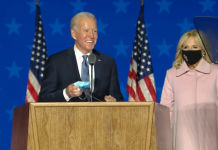Washington, D.C. – Mark Fracasso, vice president of the Mary’s Center community hospital in Washington, D.C., says that everything is under control in his medical center in order to take on flu season and the H1N1 swine flu.
“The first thing we are doing is preparing our team. We are vaccinating them, we want them to be ready for what is coming. We have also given them informational material. Something very important that we have stressed is to wash their hands, and now they are ready to educate the patients,” Fracasso said.
Another of the most effective methods is prevention. Vaccines will be distributed to states around the country in stages, and they will be first provided to the most vulnerable population: children, teenagers and pregnant women. So far, 28 pregnant women have died from H1N1, and according to experts, influenza activity is still on the rise throughout the country.
Other high-risk groups include health workers, children between the ages of six months and 24 years old, people looking after children under 6 months old, and people between ages 24 and 60 that have chronic diseases such as diabetes, asthma, or heart or lung disease.
“We already have the first doses of vaccines available for the states, and there are 25 states that have notified us that they need the vaccine,” said Dr. Felipe Lobelo of the Centers for Disease Control and Prevention (CDC). “We will have an intranasal vaccine, and gradually we will have a greater number of vaccines available for vaccination, especially for high-risk groups,” he said.
Approximately 160 million people around the country belong to high-risk groups. The vaccine will initially be available for these groups of people, at no cost.
According to the doctor, although the vaccine was created quickly, it is safe and risk-free.
“Vaccines are safe and effective. This is the main method for preventing influenza. We have a safe hospital for this kind of vaccine,” Lobel said. “This year, a new formula was created for this virus, but the safety profile is still in effect, and we are monitoring safety levels.”
Vaccine Distribution
The H1N1 vaccine will be free, although some medical centers may charge small sums of money for the shot, doctors say. There are four companies that manufacture vaccines and only one nationwide distributor. Each state will be responsible for requesting from the government the number of vaccines needed, based on the number of patients at risk and the population of each state.
“We are in the initial processes of distributing the vaccine. We are in the process of increasing the number of vaccines,” he said.
Each state will request the number of vaccines necessary according to the number of inhabitants and the population at risk. The vaccines will be initially limited, and the number of doses will increase over time.
“We expect to have at least 20 million vaccines available per week, starting in the middle of October,” Lobel said. “Vaccines are free and will be distributed to all persons, regardless of their immigration status.”
Fracasso said he is not sure whether there will be enough vaccine, since the first doses will be distributed in the coming days.
“There is expected to be enough vaccine. Health professionals will be the first to receive them … since they are the ones that will help others,” Fracasso said. He stressed that the vaccine will also be provided to high-risk groups.
Senior Citizens Are Also Vulnerable
Although H1N1 has mostly affected young people, scientists have not ruled out that people older than 50 years old may catch it, especially if they suffer from some type of chronic disease such as diabetes or lung disease, among others.
“People who are at risk may get the vaccine against Streptococcus pneumoniae to prevent both infections,” the doctor said.
According to Lobelo, prevention is a shared responsibility, and everyone should take care and try to follow the recommendations for preventing infection.








